Historic 1830 house re stucco
Harpers Ferry, West Virginia.
Here's how we did it:
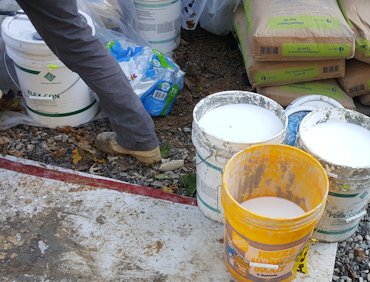
We used an acrylic bonding admixture in the mortar for a good bond to the stones and the old mortar joints.
We mixed flex-con half and half with water.
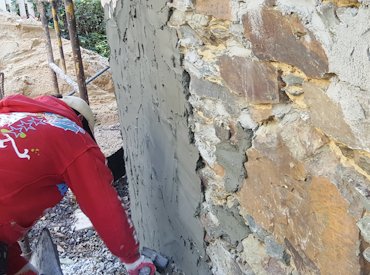
Scratch coat is squished real hard into the gaps in the stones.
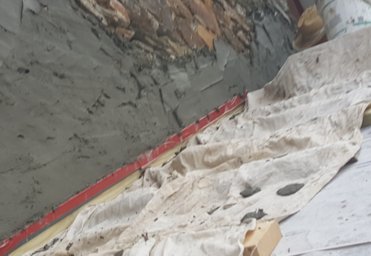
A counter flashing was put on first and the scratch coat overlaps the top of the flashing.
This way we can finish the stucco without walking on the new metal roof.
More details on how we do this here in the Stucco News.
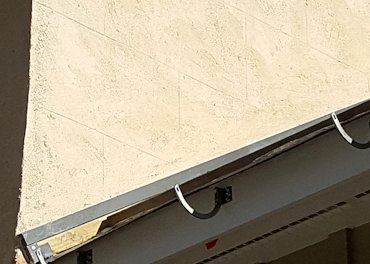
Fast forward to the finished wall. The flanges on the roof panels will be easily slid up
behind the counter flashing. Note the rough stucco finish scored like block.
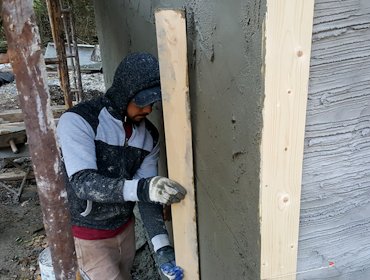
One by four corner strip is nailed up. Brown coat is rodded off with another one by.
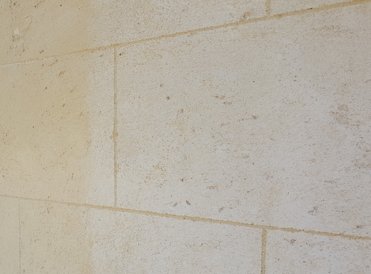
Moving ahead to the future, rough stucco is scored to look like block. We used a coarse sand for the finish. The stucco was probably done like this originally.

How we scored the block joints. Corner board was set out one quarter inch past the brown coat. This allows room
for our coarse finish. Finish material is white portland, lime and coarse concrete sand.
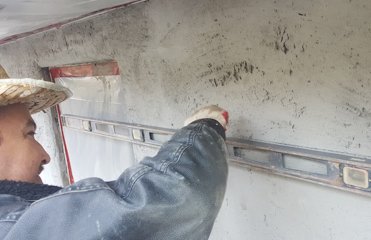
Joints are measured and marked off with a level.
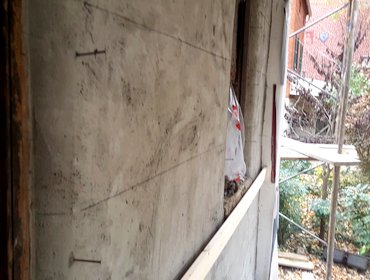
Nails are put in 3 1/2 inches below the lines, the width of a one by four.
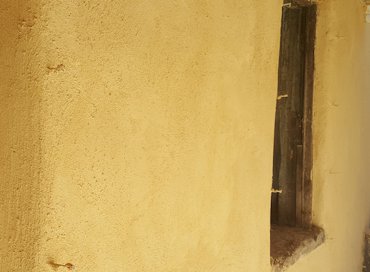
Finish coat is put on and floated rough. The nails are left sticking out.
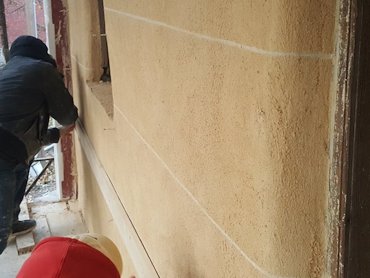
One by four is rested on the nails and the joints are scored. The nails are pulled out and the hole filled in.
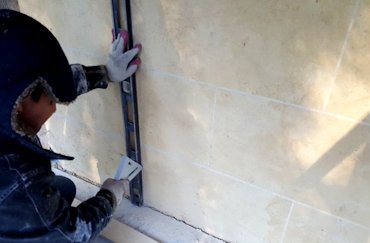
Vertical joints are scored with a level.

Long walls require 4 people to hole the board straight.

Just like 1830 again.
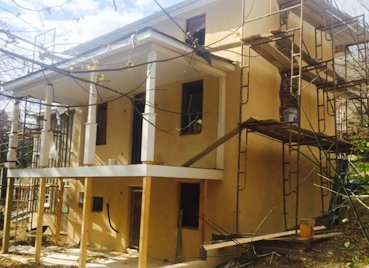
A view of the back porch.
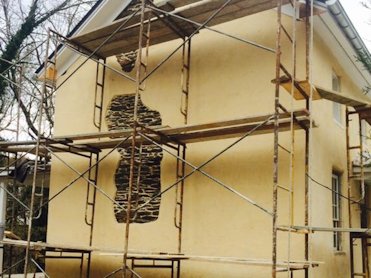
These stones projected way out past the rest. These were probably left exposed originally.
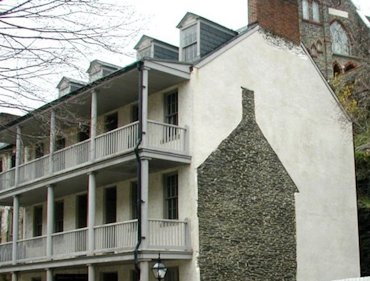
Here is the building we stuccoed in 1993. We also did a lot of inside plaster.
Please follow this link for more...
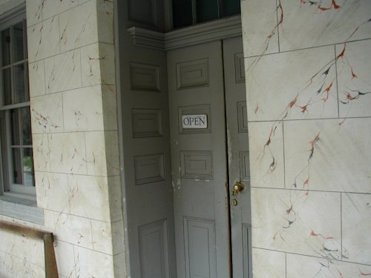
Our project was an early machine shop. They made rifles here in the 1700's and 1800's.
If you go to Harpers Ferry, West Virginia it is next to the public restrooms.

















